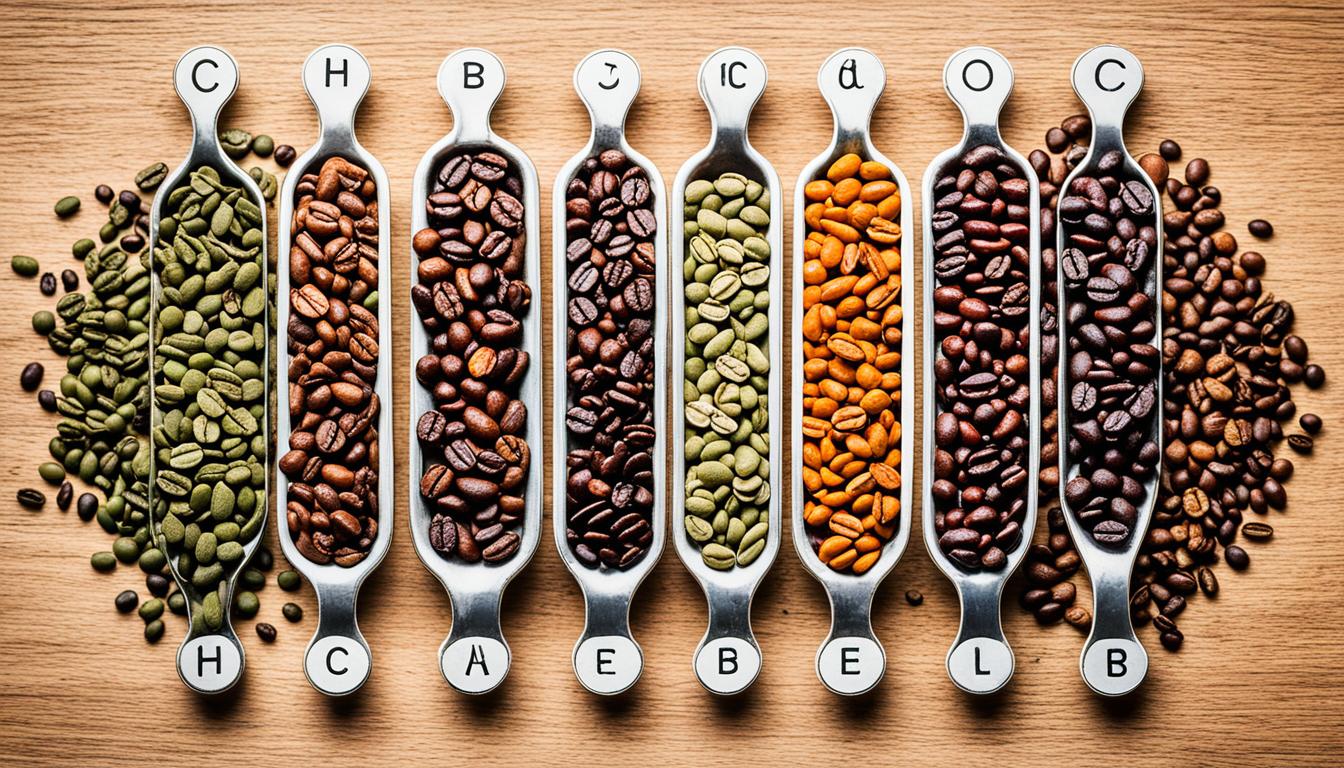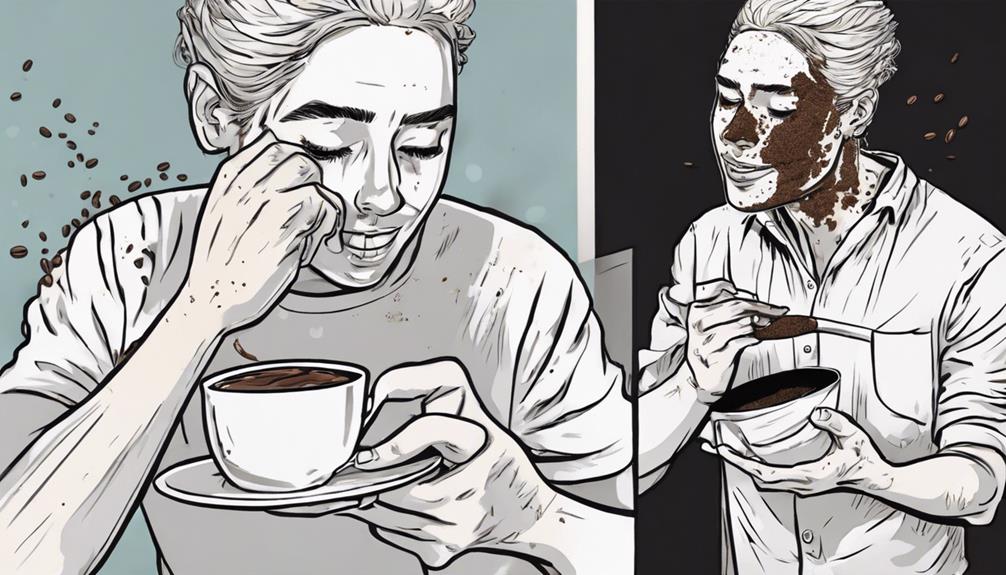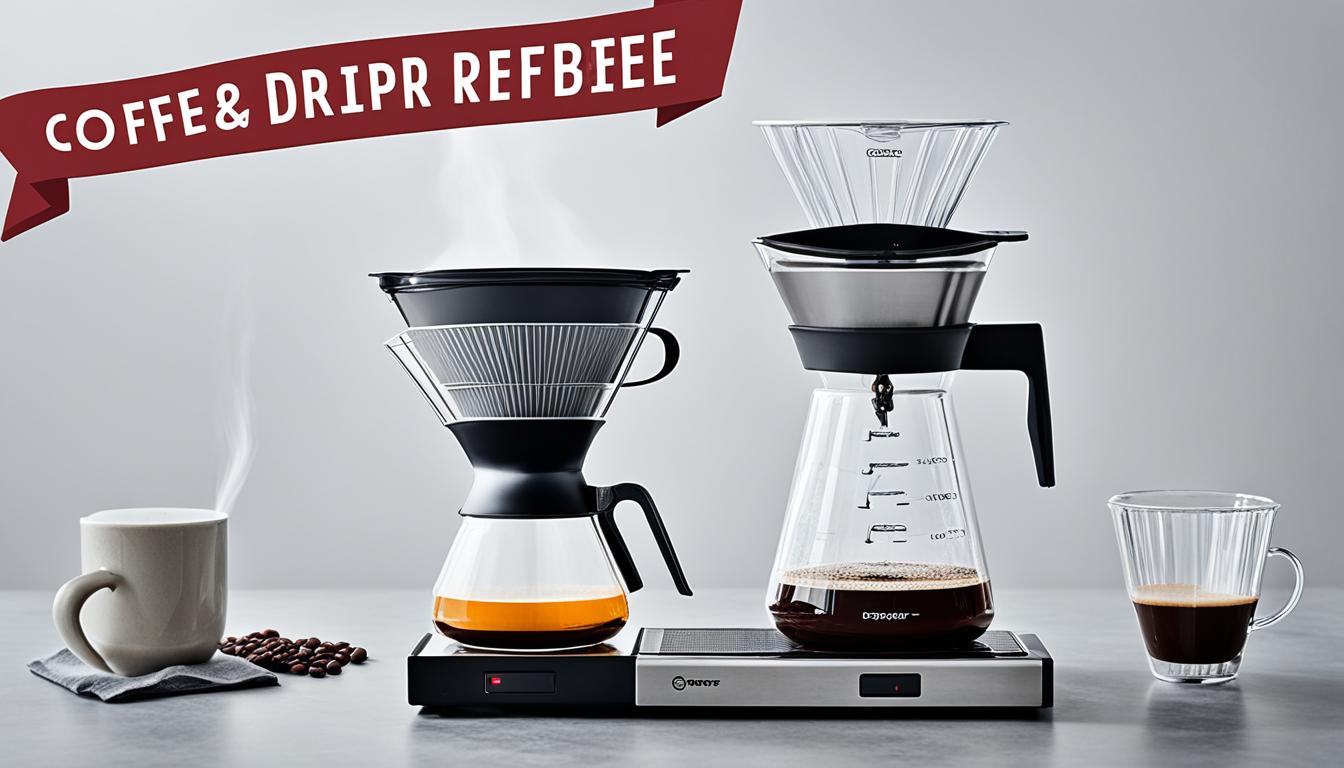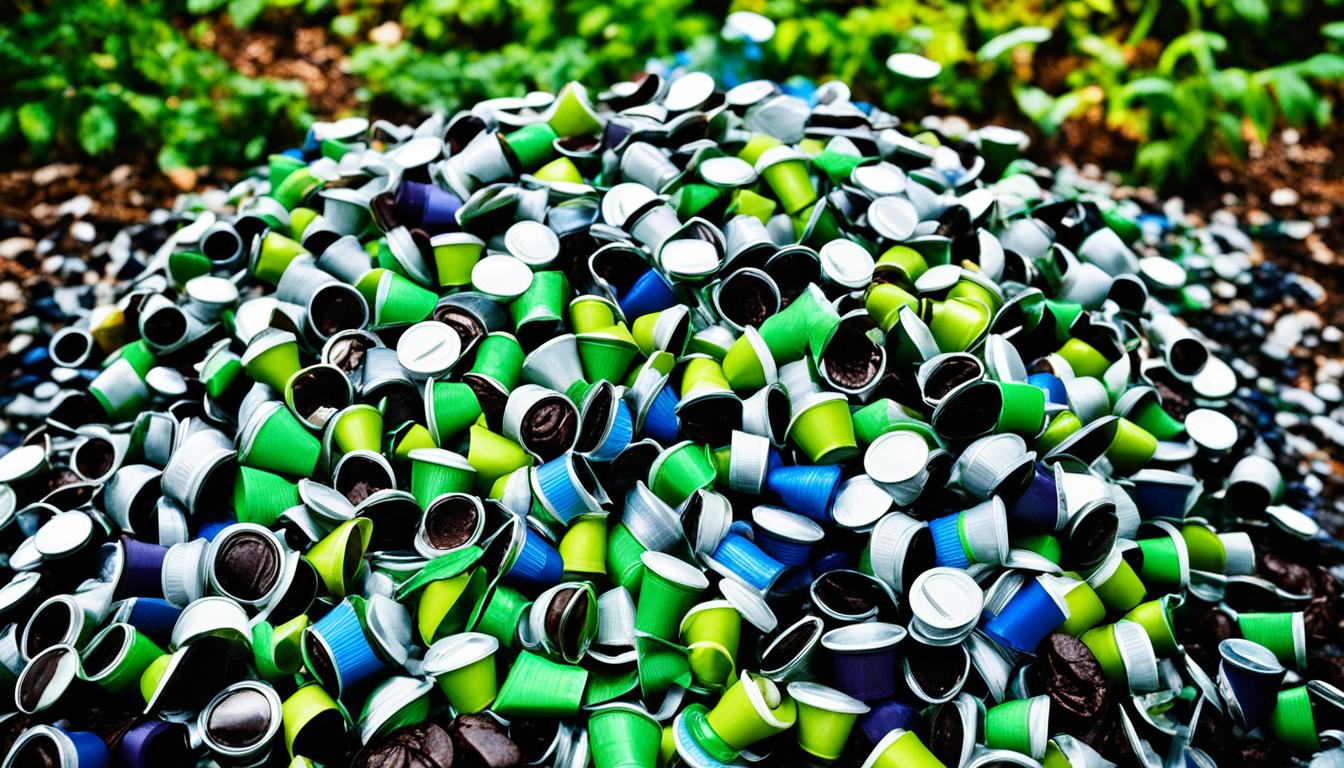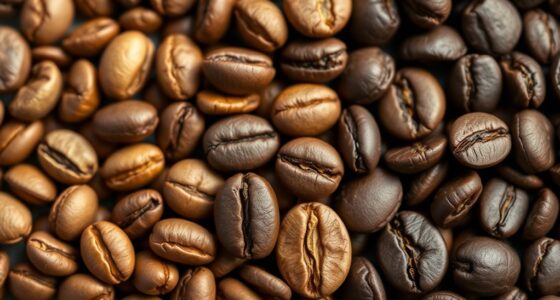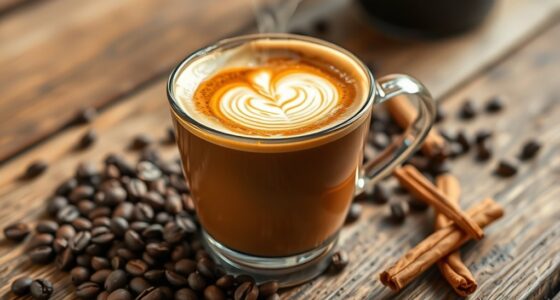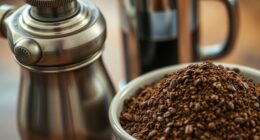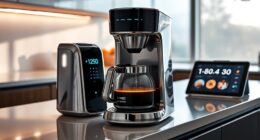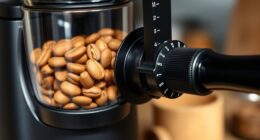The optimal temperature for brewing coffee falls between 196°F and 205°F. This highlights the crucial role that the chemistry of coffee plays in achieving a perfect cup. Coffee brewing goes beyond just flavor; it involves a scientific process that influences the overall coffee experience. Factors such as the type of coffee beans, the precise grind size, water quality, and brewing method all significantly affect the taste.
Looking into the balance of brewing elements shows how science and art come together for the perfect coffee. Next, we’ll dive into coffee beans, roasting, and the chemistry of extraction that many don’t think about.
Key Takeaways
- The ideal brewing temperature ranges between 196°F – 205°F for the best coffee extraction.
- A saturation time of 4 – 6 minutes is optimal for water to extract flavors effectively.
- Total Dissolved Solids (TDS) should ideally yield between 18% – 22% for a balanced cup.
- Moccamaster brewers have consistently earned the European Coffee Brewing Centre’s Seal of Approval.
- Water chemistry significantly impacts coffee flavor, highlighting the importance of using quality water.
The Basics: Coffee Beans
Coffee beans are key to a great coffee experience. Understanding the different coffee bean varieties boosts enjoyment. Each type brings its own special traits. These affect not only taste but also how we enjoy our coffee.
Arabica vs. Robusta
Arabica coffee and Robusta coffee are the main types. Arabica is known for its smooth taste. It often has delicate hints of flowers, fruits, and chocolate. This makes it a top choice for those who love premium coffee, despite its higher price.
Robusta, meanwhile, offers a strong, earthy flavor and more caffeine. It has a robust body and a bolder taste. It’s great for those who like their coffee strong.
Factors Influencing Flavor Profiles
The taste of coffee is influenced by many things. These include where it’s grown, the altitude, and how it’s processed. Coffee from higher altitudes tends to be more flavorful. This is because the beans grow slower.
How the coffee is grown and cared for also plays a big role. For coffee enthusiasts, understanding these factors can make every cup more enjoyable.
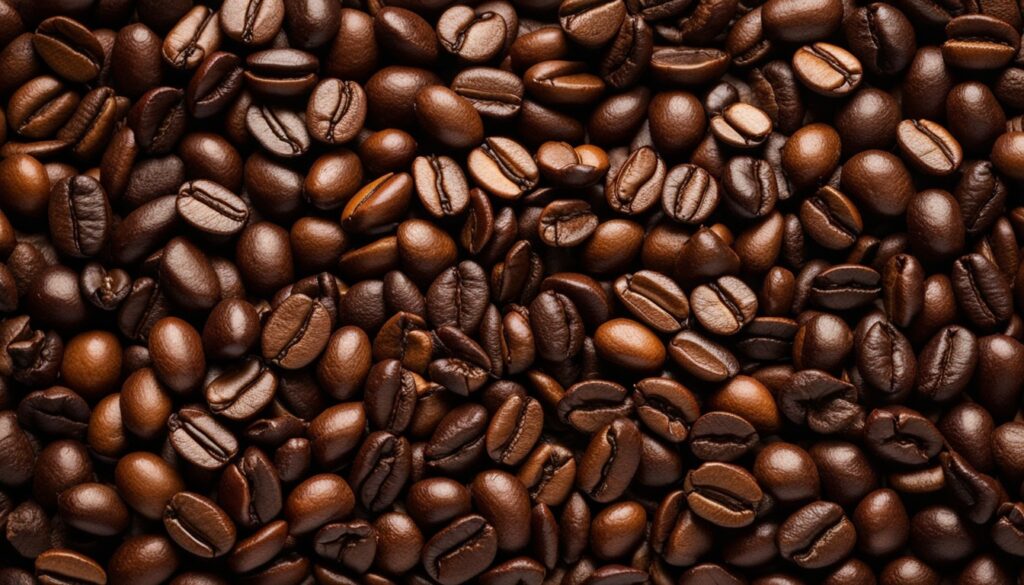
The Role of Roasting
Coffee beans change a lot when they’re roasted. This process brings out their best flavors. Knowing about the roasting stages helps coffee lovers make their perfect cup.
Stages of Roasting
Roasting coffee beans is a detailed process that changes the flavor. Here are the stages:
- Drying Stage: The first step is to dry out the beans.
- First Crack: Beans start to crack. This is when flavors start forming.
- Caramelization: The sugars in the beans turn sweet.
- Second Crack: A darker roast begins here, making the coffee bitter and smoky.
How Roasting Affects Flavor
The way coffee is roasted really changes its taste. The Maillard reaction, happening during roasting, creates unique flavors and aromas. Light roasts keep the bean’s natural taste, showing off its acidity. Dark roasts, however, are richer and smokier.
Understanding the roast levels is key for those who love coffee. Getting the roast just right brings out all sorts of flavors. This lets coffee drinkers explore tastes from floral to chocolatey.
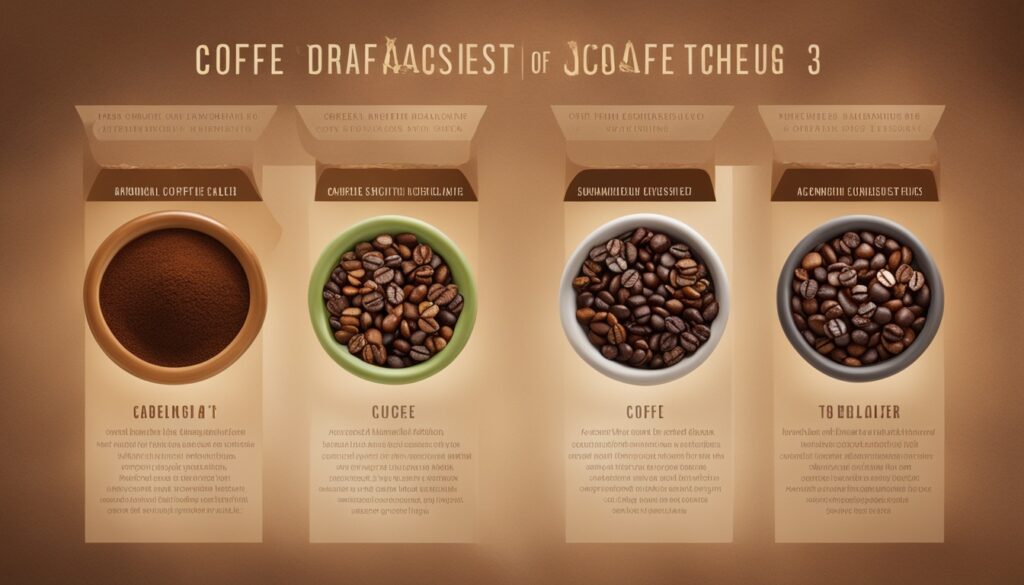
| Roast Level | Flavor Characteristics | Best Brew Method |
|---|---|---|
| Light Roast | Bright acidity, floral notes | Pour-over, Aeropress |
| Medium Roast | Balanced flavor, nutty undertones | Drip coffee, French press |
| Dark Roast | Smoky, bold flavors | Espresso, Turkish coffee |
The Chemistry Behind a Perfect Cup of Coffee
Making coffee is more than mixing grounds with water. It involves a detailed brewing chemistry. The grind size, water temperature, and brewing time are key. They all play a part in creating a flavorful cup. Knowing these scientific elements allows coffee lovers to enhance their brew.
Understanding Extraction
When we talk about coffee extraction, we’re looking at how water pulls out flavors from the coffee grounds. The water’s temperature and the coffee-to-water ratio are vital. They affect how well the flavors come out. Research has found that water with more magnesium and less bicarbonate makes coffee taste better. Without considering mineral content, the taste can suffer. Typically, only 20% of the coffee grounds are used in an average espresso shot. This means there’s a lot of room to make extraction methods better.
The Importance of Grind Size
The size of the coffee grind greatly affects how well the coffee is extracted. A chunkier grind, as in a French press, extracts flavors more slowly. A finer grind, like for espresso, works faster. If you don’t grind your coffee correctly, it could taste bitter or sour. Trying out various grind sizes can help find the perfect flavor balance. For even extraction, try grinding coffee when it’s frozen. This tip can help achieve a more consistent flavor.
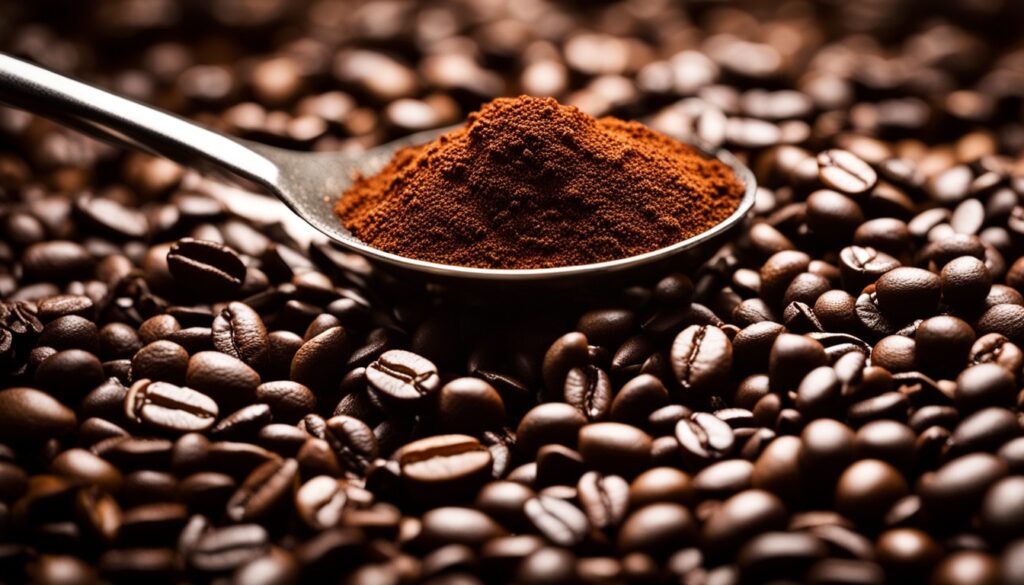
Brewing Methods: Science Meets Art
The world of coffee brewing is where science meets art. Different methods let people unlock rich flavors from coffee beans. Each cup has its own special taste, thanks to popular methods like drip coffee, French press, and espresso.
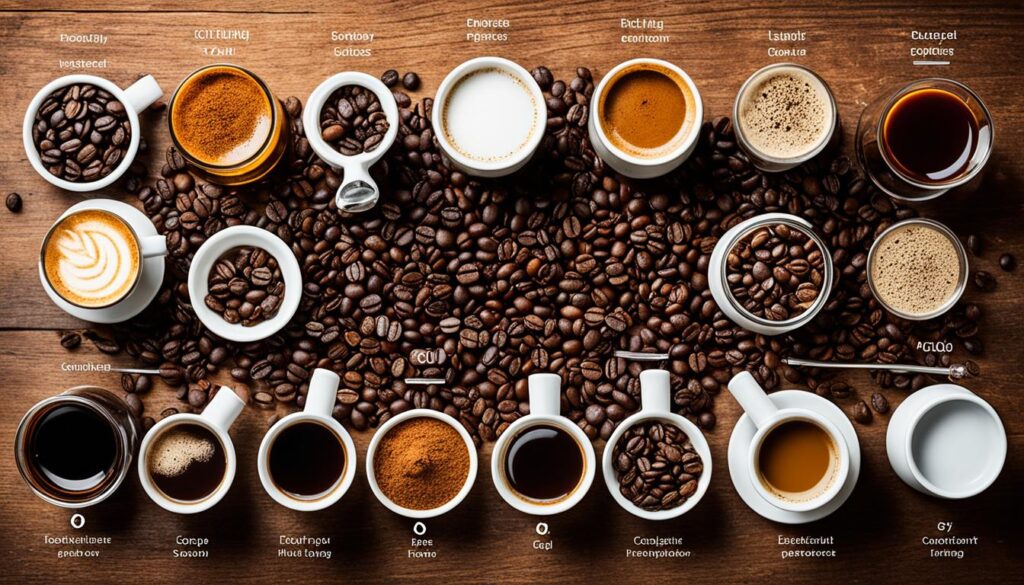
Each brewing method has its own rules for flavor. For example, drip coffee uses a medium grind for a smooth taste. But, French press uses a coarser grind for a stronger drink.
Espresso stands out for its bold flavor. It needs fine grinds and high-pressure to make a rich drink. Getting the water temperature and brewing time right is key. It helps pull out the best flavors.
How much coffee you use also matters a lot. A higher coffee-to-water ratio makes your drink stronger. But, using less coffee makes it milder. This gives brewers the chance to play and find their favorite way to make coffee.
Learning these coffee-making ways turns brewing into an art. It’s all about experimenting and making your perfect cup of coffee.
Water Temperature and Quality
Understanding water temperature and quality is key for great coffee. The right brewing temperature is crucial to extract coffee flavors well. Keeping the perfect temperature gets the best compounds from the coffee consistently.
Optimal Brewing Temperature
The best temperature for brewing coffee is 195°F to 205°F (90°C to 96°C). These temperatures help get the best taste for various brewing methods:
- French Press: A temperature of 195°F to 205°F is perfect for extracting flavors well.
- Pour-Over: This range helps control extraction and develop complex flavors.
- Drip Coffee: Staying within 195°F to 205°F avoids bitterness and ensures full flavor.
- Cold Brew: For cold brew, cooler temperatures between 35°F to 70°F (2°C to 21°C) are ideal for extracting flavors slowly.
Keeping a steady temperature is important for the chemical reactions in coffee extraction. It brings out the best flavors and aromas. Trying different temperatures can also help adjust flavor intensity and caffeine levels.
Impact of Water Quality on Flavor
The quality of water affects coffee taste significantly. The minerals in water help bring out coffee’s flavors and aromas:
- Minerals: The right amounts of magnesium and calcium make coffee taste better by aiding extraction.
- Hard Water: Too much hardness or salt in water can ruin coffee’s taste.
- pH Levels: The best water for coffee has a slightly acidic pH, around 7, for the best extraction.
Using filtered water with low levels of bicarbonate can improve coffee flavor. This avoids the bad tastes often found in bottled water. Trying different waters can enhance your coffee brewing experience.
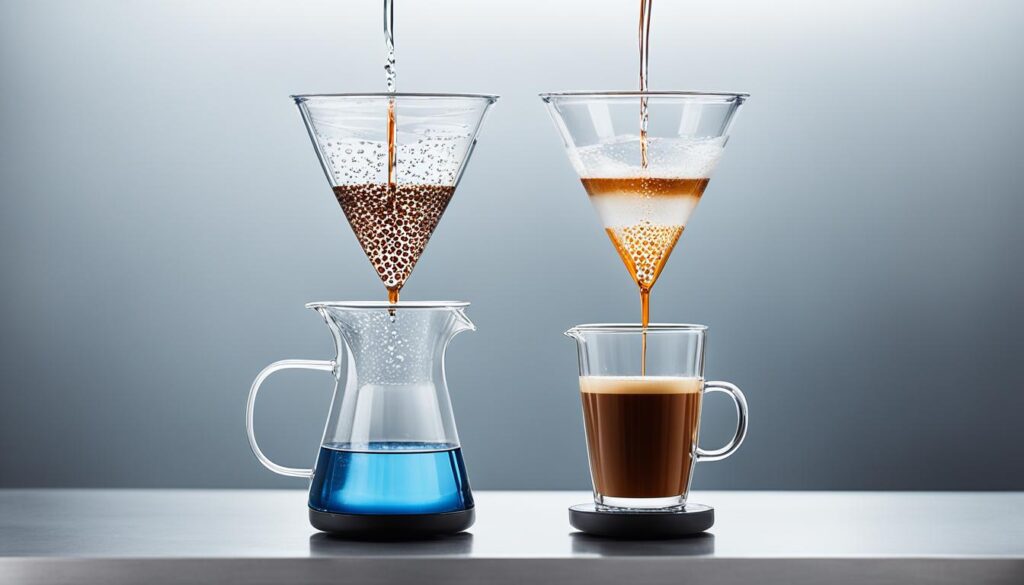
Conclusion
Exploring coffee chemistry shows us how to make great coffee. There are over 1,000 chemicals that affect taste and health. It’s crucial to know about beans, roasting, grind size, and how to brew. Every cup of coffee is a piece of art. It balances all these factors.
Coffee has many compounds like trigonelline and chlorogenic acids. They add to its flavor and offer health benefits. These benefits include lowering the risk of heart disease and diabetes. Choosing the right beans is key. You can pick Arabica for taste or Robusta for more caffeine. Trying different beans can lead to amazing coffee experiences.
Brewing temperature and time also impact coffee’s flavor and caffeine. Coffee is more than a drink; it’s a journey of taste, chemistry, and choices. People who try different brewing methods and flavors dive deep into coffee culture. They make their own path to find the perfect coffee.
